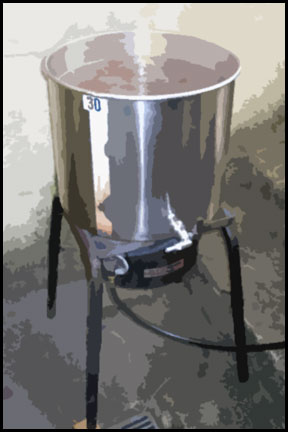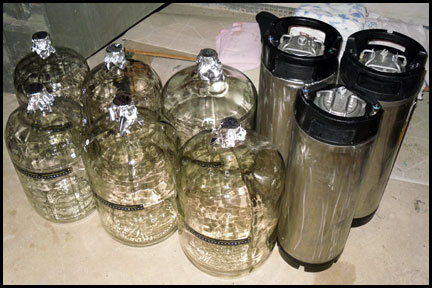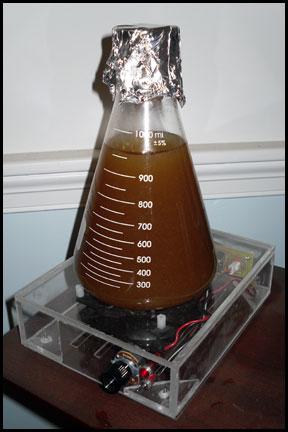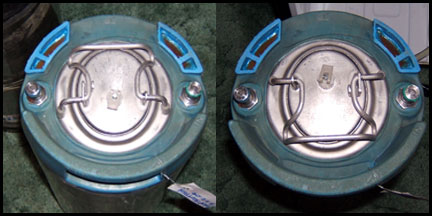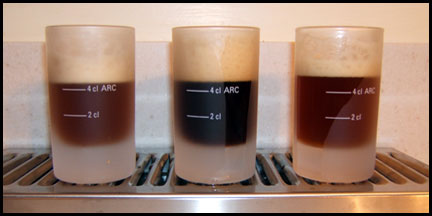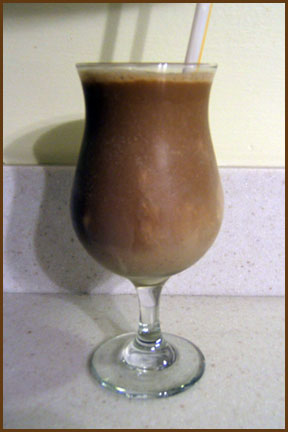This may not look like your traditional root beer float, but that’s OK, this ISN’T your traditional root beer float!

THIS is a root beer float made with homemade root beer AND homemade vanilla ice cream – sweet! About a month or two ago I finally got around to making a batch of Gnome homemade root beer inspired by the success Garrett had with his root beer. I discovered a few things: I don’t drink enough root beer/soda to make a keg (5 gallons) without having a plan to get rid of a lot of it, I need to over-carbonate my soda to run on my system since I only have one dispensing pressure which is below typical soda carbonation levels, and I need to tweak the recipe to help with head-retention. I am actually looking forward to making it again, I just still have to make it through this first batch. The batch was on tap pretty long, so I decided to bottle it to make room for real beer. Even after being on tap for as long as it was I got almost a case and a half of bottles, which means I only drank just more than a 1/4 of the keg, sheesh.
But, after making root beer I had to make a root beer float! I was going to go out and buy a pint of some premium vanilla, like Haagen-Dazs or Ben & Jerry’s or something else I like that I never get, but then I remembered that I had an ice cream maker at my mom’s house which I never use. So after getting everything ready with the maker I followed a recipe and went for it. The first time I made ice cream (like 5+ years ago) I remember it tasting like eggs (yuck!), which is kind of what turned me off of homemade ice cream, so I searched for a recipe with no egg (normal ice cream base contains milk, cream, sugar, egg yolk, plus flavoring). I found a recipe on the Food Network website from Alton Brown, who is one of my favorites, that didn’t use egg, so I went for it. Here is the recipe:
Ingredients
* 2 cups half-and-half
* 1 cup whipping cream
* 1 cup minus 2 tablespoons sugar
* 2 tablespoons peach preserves (not jelly)
* 1 vanilla bean, split and scraped
Directions
Combine all ingredients (including the bean and its pulp) in a large saucepan and place over medium heat. Attach a frying or candy thermometer to inside of pan. Stirring occasionally, bring the mixture to 170 degrees F. Remove from heat and allow to cool slightly. Remove the hull of the vanilla bean, pour mixture into lidded container and refrigerate mixture overnight to mellow flavors and texture.
Freeze mixture in ice cream freezer according to unit’s instructions. The mixture will not freeze hard in the machine. Once the volume has increased by 1/2 to 3/4 times, and reached a soft serve consistency, spoon the mixture back into a lidded container and harden in the freezer at least 1 hour before serving.
Looks kind of weird, right – peach preserves in vanilla ice cream? I poked around online and it appears as if the preserves substitute the action of the egg yolks through the pectin in the preserves. I’m not sure how it all works, but I do know that the vanilla ice cream did NOT taste like peach or eggs – bonus. Actually, the ice cream was very vanilla flavored and quite good for my “first” attempt at home made ice cream. It was a little bit grainier than I like my ice cream and our freezer kept it a little bit softer than I like mine, but all in all – major success.
So, thus the true homemade root beer float. No I didn’t use all crazy roots and suck to make my root beer, but I also didn’t milk my own cows or make my own preserves. And on that note, the homemade root beer float got me thinking what else I could make “from scratch”. I think I will try to make a peanut butter and jelly sandwich all from scratch, I think that would be cool. Make my own peanut butter (have done it), make my own jelly (have done it), and make my own bread (have done it) all together and see how MY sandwich compares to what I would make from the store. I have a sneaky suspicion that this is going to be a lot more work with lack-luster results, we shall see.
